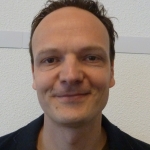DITA Specialization: Possibilities and limits for educational content
ThiemeMeulenhoff is a leading Dutch educational publisher that is thoroughly renewing its learning solutions. This requires, in addition to the ‘traditional’ Q&A-types, rich media questions and special question types, as well as the possibility to personalize content and assignments. Furthermore, content and content arrangements need to be flexible to support a range of publication solutions, from traditional book publications to dynamic, personalized digital solutions based on profiling and recommendation. Given these requirements, ThiemeMeulenhoff and her partners have chosen DITA as base XML architecture. The standard DITA topic-based writing style and flexible arrangements provide the needed flexibility. To meet our other requirements with respect to educational content, we have used the specialization mechanisms in DITA to develop special topics and domains. In this presentation, we will describe the DITA specialization that we have developed to meet our specific needs. We will discuss both the power and the limitations of the DITA specialization mechanism. Our case illustrates that DITA is applicable to domains outside of technical documentation, such as the educational domain, which has many additional and often complex content requirements.
What can attendees expect to learn?
We will discuss both the power and the limitations of the DITA specialization mechanism. Our case illustrates that DITA is applicable to domains outside of technical documentation, such as the educational domain.
Meet the Presenters

Birgit Strackenbrock is a freelance Information Engineer. During her career she acquired much knowledge of and experience with XML and DITA. She knows how to use them in the creation and publication of content. She mainly works for various publishers, the last four years especially for educational publishers. Her focus hereby is on the content creation processes and the underlying XML structures and XML schemas. Where possible she recommends and advises the use of DITA. She has already made different DITA specialisations.

Emiel Ubink, MSc., has a background in artificial intelligence, modelling and simulation and human factors research. He is currently working as a learning solutions architect at ThiemeMeulenhoff, a Dutch learning design company. He focuses on technological innovations for education, such as software for personalized learning and learning analytics. To achieve true innovation in this field, a suitable content architecture is key, so he also works on developing and maintaining a content architecture that is suitable for the current and future needs of education.
